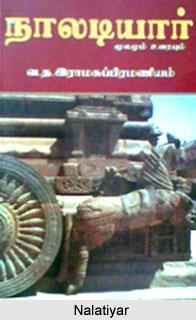 Folk literature in Tamil had a major role to play in the subsequent development of Tamil prose. Tamil prose in its early period was quite similar to oral tales. There is quite a significant amount of folk literature that exists in all major Indian languages. The role of this folk literature in the history and development of Indian literature cannot be ignored. Oral folktale played a central role in the development of Tamil literature in the nineteenth century. Oral tale was the most popular and widespread pre-modern form of prose in India and the only pre-modern form of prose fiction. In the early part of the nineteenth century, from around 1800-1850; printed oral tales played a singular role in public schools. It is interesting to note that at mid-century, these same tales were rejected for being traditional and poetical. Thus after mid-century, these tales were re-defined as indigenous literature and influenced the first Tamil novels. These folktales had a major influence on those who wrote, as well as those who wrote about, the new prose fiction in Tamil.
Folk literature in Tamil had a major role to play in the subsequent development of Tamil prose. Tamil prose in its early period was quite similar to oral tales. There is quite a significant amount of folk literature that exists in all major Indian languages. The role of this folk literature in the history and development of Indian literature cannot be ignored. Oral folktale played a central role in the development of Tamil literature in the nineteenth century. Oral tale was the most popular and widespread pre-modern form of prose in India and the only pre-modern form of prose fiction. In the early part of the nineteenth century, from around 1800-1850; printed oral tales played a singular role in public schools. It is interesting to note that at mid-century, these same tales were rejected for being traditional and poetical. Thus after mid-century, these tales were re-defined as indigenous literature and influenced the first Tamil novels. These folktales had a major influence on those who wrote, as well as those who wrote about, the new prose fiction in Tamil.
Well-known literary texts, such as Tirukkural and Nalatiyar, appeared in print, but the surprising fact is that these classical texts were outnumbered by books of oral tales. The first of these was the Vikkiramatittan katai, a popular collection of folktales within a literary tale frame which appeared in 1804, followed by the Catumuka Ravanan katai in 1808; the Mariyatai Raman katai and Tamilariyum mantai katai 1812; the Pururava cakravarti katai in l8l9;theKata-mancari, a collection of oral tales, in 1820; the Tamil-English bilingual publication of Paramartta kuruvin katai (Guru Simpleton) in 1822 (in London); a Tamil Panchatantra in 1826; the Katacintamani, another popular collection of oral tales, in 1833; and translations of tales from English, French and Aesop by the 1850s. By mid-century many of these books had gone into second and third reprinting, and some are still available today.
Though the oral tames by themselves did not get any separate place in the new literary canon as a form of indigenous literature, it played a major role in what was referred to by Sudhir Chandra as the attempt to `recover the vernacular mind`. The folk materials were a major source for the construction of both authentic language and literature. In colonial India, folk literature possessed an authenticity that qualified it for a place in nationalist discourse. The importance and authority of the oral tale lay not only in its tradition but also in the feature of its oral tone. The value of speech was a particularly powerful tool in South India where language was the most important factor in the formation of a Dravidian identity. If Tamil prose fiction at the end of the century was to gain wide social acceptance, it could not stray too far from the spoken language of the tale.
Any Tamil writer, setting forth to write in the middle or late nineteenth century, would have faced the struggle between writing and speech, a division deepened by the printing of classical texts throughout the century. Pride in a classical literature and the weight of centuries of scholarship in Tamil and Sanskrit pulled the writer in one direction, but pulling in the other was the perceived authenticity of speech. Thus the oral tradition of folklore had a major impact on Tamil Literature in the 19th century.



















